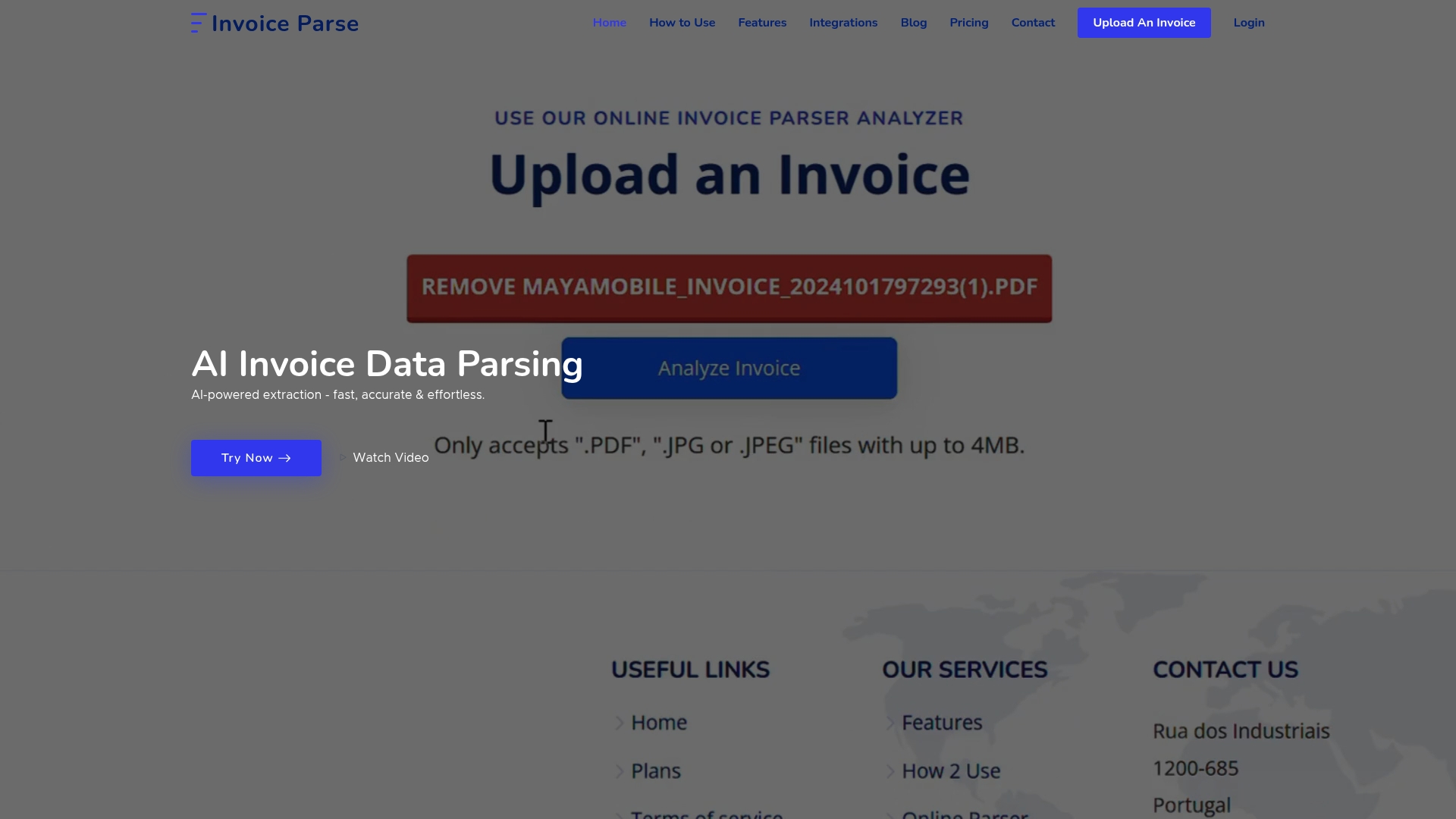Invoice processing might sound like one of those routine office tasks everyone just puts up with and forgets. Yet, every year companies lose up to 80 percent of potential efficiency simply from clunky, manual invoice procedures. The wild part is most businesses think minor tweaks will fix their slowdowns. The truth is a handful of surprisingly simple changes can flip invoice chaos into the smoothest process you have ever seen.

Invoice Processing Best Practices for Efficient Workflows
Table of Contents
- Understanding The Invoice Processing Cycle
- Key Steps To Optimize Invoice Handling
- Top Tools And Automation Solutions
- Common Mistakes And How To Avoid Them
Quick Summary
| Takeaway | Explanation |
|---|---|
| Streamline Invoice Management Stages | Establish clear stages like receipt, verification, approval, and payment to ensure accuracy and efficiency. |
| Leverage Automation for Efficiency | Utilize advanced technologies like Robotic Process Automation to reduce manual errors and processing times significantly. |
| Implement Centralized Document Management | Create dedicated submission channels and standardized workflows to enhance organization and accountability. |
| Establish Strict Verification Protocols | Enforce rigorous validation processes to confirm accuracy and compliance before processing payments. |
| Train Staff on Best Practices | Ongoing education about invoice handling can prevent errors and streamline the processing workflow. |
Understanding the Invoice Processing Cycle
Invoice processing represents a critical financial workflow that transforms raw invoice documents into actionable financial data. This systematic approach involves multiple stages that ensure accurate financial record keeping, timely payments, and efficient organizational management.
The Sequential Stages of Invoice Management
The invoice processing cycle typically encompasses several interconnected stages that require precision and careful attention. According to Central Michigan University’s financial guidelines, the cycle begins with invoice receipt and progresses through critical verification and approval steps.
Key Stages Include:
- Invoice Receipt: Initial document capture from vendors
- Document Verification: Checking invoice accuracy and completeness
- Approval Workflow: Securing necessary organizational authorizations
- Payment Processing: Executing financial transactions
- Record Maintenance: Archiving transaction details

Verification and Validation Processes
Accurate invoice processing demands rigorous verification mechanisms. The University of Massachusetts financial guidelines emphasize the importance of comprehensive document review before financial commitment. This involves cross-referencing purchase orders, confirming vendor details, and validating line item descriptions.
The verification process serves multiple critical functions. It prevents fraudulent transactions, ensures budgetary compliance, and maintains accurate financial records. Professionals must carefully examine each invoice for potential discrepancies, matching incoming bills against existing contracts and purchase agreements.
Technological Transformation in Invoice Processing
Modern invoice processing has dramatically evolved from manual paper-based systems to sophisticated digital workflows. Automation technologies now enable rapid document parsing, intelligent data extraction, and seamless integration with financial management systems. Learn more about advanced invoice processing techniques that can dramatically improve organizational efficiency.
Digital solutions provide real-time tracking, reduce human error, and accelerate payment cycles. By implementing smart technologies, organizations can transform invoice processing from a mundane administrative task into a strategic financial management function. These innovations support faster decision making, improved vendor relationships, and enhanced financial transparency.
Understanding the nuanced stages of invoice processing is fundamental for financial professionals seeking to optimize organizational workflows. Each step represents an opportunity to enhance accuracy, reduce costs, and create more streamlined financial operations.
To help clarify the distinct tasks involved in invoice management, the following table outlines the sequential stages of the invoice processing cycle and describes the main activities in each stage.
| Stage | Main Activities |
|---|---|
| Invoice Receipt | Capture incoming invoices from vendors |
| Document Verification | Check invoice accuracy and completeness |
| Approval Workflow | Obtain necessary internal authorizations |
| Payment Processing | Execute payments to vendors |
| Record Maintenance | Archive transaction and maintain financial records |
Key Steps to Optimize Invoice Handling
Optimizing invoice handling requires a strategic approach that combines technological innovation, process standardization, and meticulous attention to detail. Organizations seeking to enhance their financial workflows must implement comprehensive strategies that reduce errors, accelerate processing times, and improve overall financial management.
Centralized Processing and Document Management
Effective invoice handling begins with establishing a centralized processing system. According to Boston University’s financial guidelines, organizations should create dedicated channels for invoice submission and review. This approach minimizes confusion, reduces potential document loss, and creates a clear audit trail.
Key Centralization Strategies:
- Dedicated Submission Channels: Create specific email addresses or digital portals for invoice receipt
- Standardized Document Routing: Implement consistent workflows for invoice review and approval
- Digital Document Storage: Utilize secure cloud-based systems for maintaining invoice records
Workflow Automation and Technological Integration
Modern invoice handling demands sophisticated technological solutions. The University of California, Davis recommends implementing workflow management systems that facilitate seamless approvals and reduce administrative overhead. Explore advanced invoice processing techniques that can transform your financial operations.
Automation technologies offer numerous advantages. They enable real-time tracking, minimize human error, and accelerate processing cycles. Advanced systems can automatically validate invoice details, match purchase orders, and flag potential discrepancies before manual review.
Standardization and Compliance Protocols
Consistent protocols are fundamental to efficient invoice handling. The University of Georgia’s research highlights the importance of developing clear, repeatable processes that ensure compliance and reduce administrative complexity.
Key compliance considerations include:
- Establishing clear approval hierarchies
- Creating standardized review checklists
- Implementing multi-stage verification processes
- Maintaining comprehensive audit trails
By developing robust standardization protocols, organizations can significantly reduce processing times, minimize errors, and create more transparent financial workflows. The goal is to transform invoice handling from a potentially chaotic administrative task into a streamlined, predictable process that supports broader organizational financial strategies.
Top Tools and Automation Solutions
Automation technologies have revolutionized invoice processing, offering unprecedented efficiency and accuracy for organizations seeking to optimize their financial workflows. These advanced solutions transform traditional manual processes into streamlined, intelligent systems that dramatically reduce administrative overhead and minimize human error.
Robotic Process Automation and Intelligent Extraction Technologies
Cutting-edge invoice processing tools leverage sophisticated technologies to automate complex financial tasks. According to the U.S. Department of the Interior’s technology guidelines, Robotic Process Automation (RPA) and Intelligent Optical Character Recognition (IOCR) can replicate human tasks with remarkable precision.
Key Technological Capabilities:
- Automatic Data Extraction: Rapidly capture invoice details without manual intervention
- Multi-Application Processing: Seamlessly integrate data across different financial systems
- Real-Time Error Detection: Identify and flag potential discrepancies instantly
Strategic Tool Selection and Implementation
Choosing the right automation solution requires careful consideration of organizational needs. The Association for Financial Professionals emphasizes the importance of comprehensive evaluation and stakeholder engagement. Learn more about automating bookkeeping processes to understand the full potential of these technologies.
Successful implementation involves:
- Conducting thorough organizational needs assessment
- Evaluating solution compatibility with existing systems
- Ensuring robust security and compliance features
- Planning comprehensive staff training programs
Best Practices for Tool Adoption
The Institute of Financial Operations & Leadership recommends a strategic approach to implementing automation technologies. This includes clear communication of benefits, involving key stakeholders from the beginning, and providing ongoing training and support.
Advanced invoice processing tools offer transformative benefits beyond simple automation. They enable organizations to:
- Reduce processing times by up to 80%
- Minimize manual data entry errors
- Improve financial visibility and reporting
- Enhance vendor relationship management
- Create more agile and responsive financial workflows
By embracing these innovative technologies, organizations can transition from reactive administrative processes to proactive financial management strategies. The future of invoice processing lies in intelligent, adaptive systems that continuously learn and improve, providing unprecedented levels of efficiency and accuracy.
Common Mistakes and How to Avoid Them
Invoice processing involves complex workflows where even minor errors can lead to significant financial and operational challenges. Understanding and preventing common mistakes is crucial for maintaining accurate financial records and ensuring smooth organizational operations.
Duplicate Invoice and Submission Errors
Duplicate invoice submissions represent a significant operational risk. According to Indiana University’s Accounts Payable guidelines, organizations frequently encounter issues when both suppliers and internal staff inadvertently submit the same invoice multiple times.
Key Prevention Strategies:
- Implement centralized invoice tracking systems
- Establish unique invoice reference number protocols
- Create clear communication channels with vendors
- Utilize automated duplicate detection technologies
Below is a checklist table summarizing key prevention strategies for avoiding duplicate invoice and submission errors, as discussed in the article.
| Prevention Strategy | In Place? |
|---|---|
| Centralized invoice tracking system | |
| Unique invoice reference number protocol | |
| Clear communication with vendors | |
| Automated duplicate detection |
Compliance and Validation Challenges
Invoice processing requires strict adherence to organizational and regulatory compliance standards. The Federal Deposit Insurance Corporation emphasizes the importance of rigorous validation criteria to prevent processing errors and potential financial discrepancies.
Critical validation checks include:
- Verifying mathematical accuracy of invoice calculations
- Confirming unique invoice identification numbers
- Validating vendor credentials and contact information
- Ensuring alignment with approved purchase orders
The University of Massachusetts procurement guidelines strongly recommend initiating purchasing transactions through formal requisition processes to minimize unauthorized expenditures and maintain financial control.
Technological and Human Error Mitigation
Mitigating invoice processing errors requires a comprehensive approach that combines technological solutions and human expertise. Learn more about managing invoice complexities to understand the nuanced challenges in financial document management.
Effective error reduction strategies include:
- Implementing automated validation workflows
- Conducting regular staff training programs
- Developing clear standard operating procedures
- Creating multi-stage review processes
- Utilizing advanced optical character recognition technologies
By proactively addressing potential mistakes, organizations can transform invoice processing from a potential source of errors into a streamlined, reliable financial management function. The key lies in continuous improvement, technological adoption, and maintaining a culture of precision and accountability.
Successful invoice processing is not about eliminating all errors but creating robust systems that quickly identify, correct, and learn from potential mistakes. Organizations that invest in comprehensive error prevention strategies will ultimately achieve more efficient, accurate, and transparent financial operations.

Frequently Asked Questions
What are the key stages of the invoice processing cycle?
The key stages of the invoice processing cycle include invoice receipt, document verification, approval workflow, payment processing, and record maintenance.
How can automation improve invoice processing efficiency?
Automation technologies streamline invoice processing by reducing manual errors, accelerating processing times, and enabling real-time tracking of invoices throughout the workflow.
What are common mistakes to avoid in invoice processing?
Common mistakes in invoice processing include duplicate invoice submissions, compliance and validation challenges, and oversight of technological and human error mitigation practices.
Why is verification important in the invoice processing cycle?
Verification is crucial as it ensures the accuracy and completeness of invoices, prevents fraudulent transactions, and maintains compliance with budgetary regulations.
Ready to End the Chaos of Manual Invoice Processing?
Your business depends on efficiency. After reading about how manual invoice handling can eat away at your productivity and expose you to duplicate payments, errors, and compliance headaches, you know there is a better way. The article showed that automation and accuracy can transform the way invoices move through your company and free your finance teams from drudge work. If your current process feels cluttered, slow, or mistake-prone, it is time to take action.

Experience invoice processing that actually works for you. Invoice Parse lets you upload invoices in PDF or image formats for instant, accurate data extraction with no templates required. Enjoy real-time results and seamless exports to Excel or your workflow tools. Ready to replace slow manual steps with simplicity and speed? Start your free trial at Invoice Parse and let automation power your next workflow upgrade. Do not wait to claim back your time and cut costly errors. Make your invoice processing effortless today.
Recommended
- AI Invoice Parse – Invoice Approval Workflow: Steps, Best Practices, and Tools
- AI Invoice Parse – Automated Invoice Processing: Simplify Your Workflow in 2025
- AI Invoice Parse – Invoice Data Guide: Efficient Processing in 2025
- AI Invoice Parse – Vendor Invoice Guide: Everything You Need to Know in 2025
- Automating Business Processes with Adobe PDF Solutions - Mapsoft
- Odoo invoicing features. Full scale invoicing software
